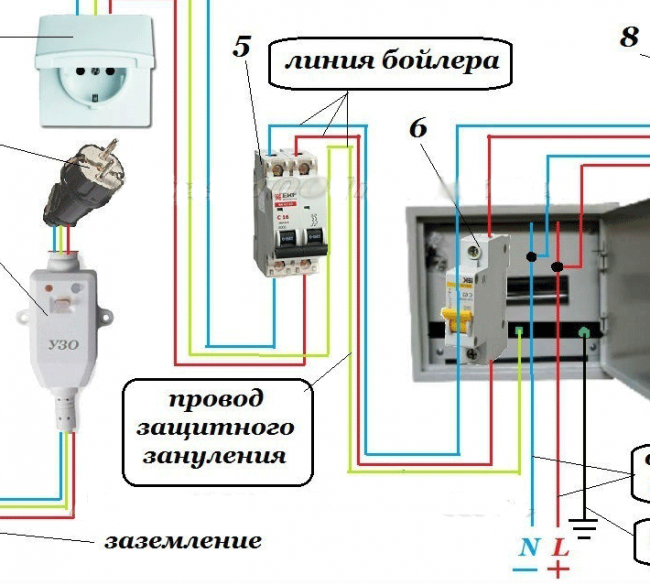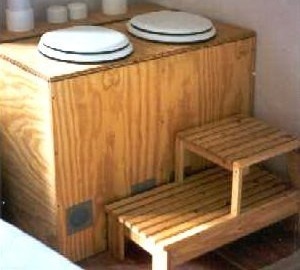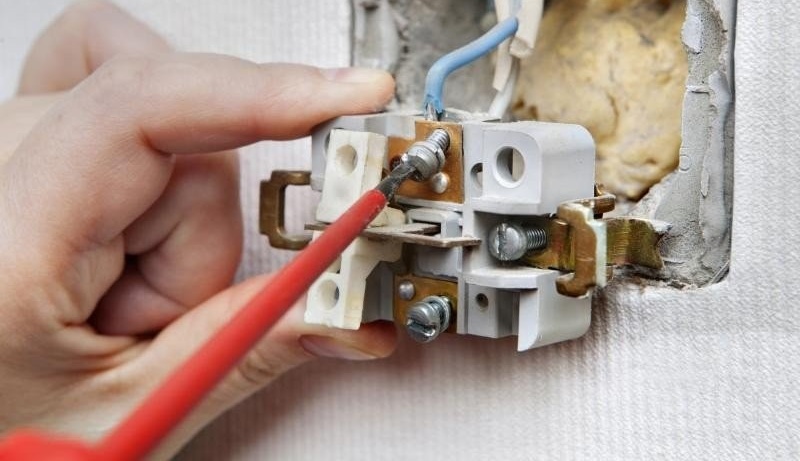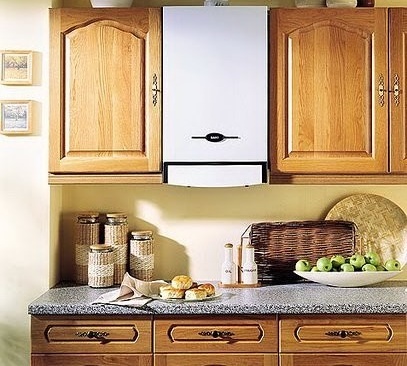How to connect a water heater: step by step instructions
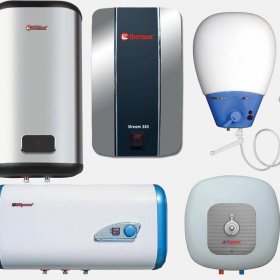
Hot water supply in an apartment, country house or private house is rarely stable and uninterrupted. Repairs, accidents, breaks for pressure testing or other seasonal work cause frequent problems with the supply of hot water. In cottages, private homes, often not even the ability to connect to the highway, which forces us to look for other options. You can connect a water heater, which eliminates such problems, but it creates a considerable load on the mains, the state of which should be taken into account when choosing the power of the device.
Content
How to connect a water heater to the water supply system and the electrical network yourself
The procedure for connecting electric heaters is described in detail in the user manual that came with the device. But, before you begin familiarization, you should correctly choose the most suitable device. Consider the types of boilers, their features and connection rules.
Flow type
Flowing electric heaters are compact devices that do not take up much space (which is especially true for small rooms) and are convenient to use. They produce spot heating of the pipeline section, without accumulating water in the tank. At the same time, the load on the electric networks from them is maximum with a range of power consumption of 3–27 kW. It is often said that the use of instantaneous heaters can ruin the owner, since the amount of electricity needed to operate them is very large. In practice, it turns out that the maintenance of such devices is not much more expensive than any other, since the water is heated directly during use, so the duration of high loads on the power grid is relatively small. The disadvantage of flow heaters is the limited use - they can mainly be used only for shower heads or taps.
The installation of a flow heater can be conditionally divided into several stages:
- The choice of place. The grooves should not be installed far from the points of tapping, in order to exclude heat losses when water flows through pipelines. At the same time, it is also impossible to place too close to taps or shower nozzles, splashes of water should not fall on the device. Select the installation location so that it is convenient to use both the water heater and the faucet (shower).
- Accession to the water supply system. Two options can be used here - quick connection of the device to the shower hose or more complex - through the tee for the washing machine, which opens up great opportunities. In the first case, only a shower can be provided with hot water, in the second - several points of drawdown. You can also make a tap from the HVS pipeline to supply water to the inlet of the device, but this option is quite time-consuming, it is advisable to use it only for devices of high power.
- Power connection. This moment is the most crucial. Flowing machines are powerful devices; ordinary lines cannot be used for their operation. It is necessary to draw a separate circuit with a thick copper wire with a cross section of about 4 mm2 (for powerful appliances from 9 kW - 6 mm2) You will also need a separate machine (RCD - residual current device).
For any type of heater, grounding is mandatory. The use of ordinary sockets is excluded when the power of the device is above 3 kW.
The device is mounted on the wall according to the user manual.
- Usually you need to remove the cover, mark the centers of the holes, drill them and insert the dowels. You can not install the heater on drywall or thin wooden partitions, you need a solid support - concrete or brick wall.
- After installation, it is necessary to connect the cold water supply pipes (to the heater inlet) and to the outlet - a shower hose or a hot water pipe going to the taps.
- To adjust the heating mode, it is recommended to install a tap at the inlet (at the cold water supply). The crane cannot be installed at the outlet, unless otherwise indicated in the instructions.
How to connect a storage water heater
Accumulative electric heaters are tanks with water heated with the help of electric heating elements (tubular electric heaters). They are metal tubes that are filled with a conductive electrical insulator with a conductive thread in the center. TENY heat the liquid, converting electrical energy into heat.
When using boilers with large tanks, you do not have to wait for the next portion of water to heat up when water is actively drawn. But, the larger the volume, the greater the load on the power grid, and, accordingly, the cost of paying bills. In addition, the dimensions of the storage boilers with large capacities are quite impressive and require a roomy room.
The power consumption of storage heaters is relatively low, about 1–2 kW. Nevertheless, when purchasing a boiler, you should carefully examine the wiring so that the additional load does not affect its condition in a fatal way.
Accumulative devices have indisputable advantages over flow drivers:
- The ability to provide several points of tapping, to create a complete DHW system in a house or apartment.
- The heat-insulated housing allows you to keep hot water for a long time even in the event of a power outage.
There are also disadvantages:
- The time for heating the water increases, especially when using large containers.
- The dimensions and weight of the heaters put forward increased demands on supporting structures or surfaces.
Installation of storage electric heaters:
- Installation of the device. It should be carried out in a convenient place where there is access to the device to replace burned-out heating elements or otherwise repair, service the device. There are no fundamental requirements for the proximity of draw points, so you can install a storage heater so that it does not violate the aesthetics of interior design, if the housing area allows it. Devices with a small tank can be installed under the sink in the bathroom or in the kitchen.The only limiting factor is the location of water pipes and electrical wiring, but these issues are easily resolved.
- Connection of inlet and outlet pipelines.
- Power connection. To do this, it is necessary to provide a separate line with an RCD circuit breaker. Continuous loads can damage worn wiring. The cross section of the line should be calculated based on the power consumption of the heater.
The distance from the outlet to the sink or bath should be at least 1 m.
There are two ways to connect to a water supply system:
- Connection of a cold water pipeline to the inlet through a splitter. The output joins the domestic hot water system of the house. This option is good for a private house where there is no centralized hot water supply.
- Insertion of the outlet pipe into the DHW system. Cold water from the riser is fed to the heater inlet, and hot water from the outlet goes into the domestic hot water pipe. The connection to the hot water riser is blocked by a tap at this time. The method is good for houses or apartments with available centralized water supply for both cold water and hot water. There is an opportunity to provide yourself with hot water during outages or interruptions, but, if necessary, use centralized resources.
The water pressure in the central cold water system may be too high for the heater. It is necessary to clarify this issue by studying the passport or instructions for the device, and, if necessary, install a reduction gear. If a private house does not have a centralized cold water supply, then the heater can be connected to a storage tank installed at a height (usually on a roof or a separate structure). The main condition for such a connection is to ensure that the height difference between the capacity and the heater is at least 2 m. If this requirement is not fulfilled, you must at least raise the tee (splitter) above the level of the heater. The outlet pipe of the tank through a tee is connected to the wiring of cold water and to the heater inlet, and the output of the device is connected to the wiring of hot water.

From the riser with cold water, the pipe is led to the boiler, and from it to the points of drawdown
Video: installation of a storage boiler
Combined unit connection
The design of combined devices (they are also called indirect heating boilers) combines a flow-through type of a water heater and a heat exchanger. Hot water is passed through a coil located inside the main water tank, giving it thermal energy. Due to the large length of the coil, providing a large area of contact of the walls with water from the tank, the heating is quite effective, allowing you to get enough hot water.
Since the coolant is produced on the principle of a flow heater, the energy consumption will be high, which will require the availability of electrical wiring of sufficient cross section in good condition.
To supply a private house, it is not advisable to purchase a large heater, since during heating the water in the tank, a flow-through heating mechanism will be used, which will create a rather long and high load on the electrical network. It will require the creation of a separate line with powerful RCDs, the wire cross section is selected according to the total power of the device with a 10% safety margin. Large and long loads mean high costs for hot water, which is not accessible to everyone. In addition, the general deterioration of power grids does not favor the use of large combined heaters.
There are wall and floor heaters. As a rule, wall-mounted ones have a smaller volume and weight, while floor-standing ones are characterized by large dimensions.Connecting the device to the water supply practically does not differ from the method of connecting the storage devices, and the features of the power supply are the same as for flow heaters.
Video: principle of operation and connection of the combined unit
Features of operation and maintenance
The main problem is the choice of the most suitable device that can meet the needs of the house in hot water supply and not to empty the owner’s wallet too much. Before buying, you should roughly calculate the allowable cost, take into account the cost of electricity, the daily need for hot water. The purchased device should provide comfort, and not create problems.
Operation of the heaters is carried out in accordance with the instructions that are attached to the devices. It should be carefully studied and strictly observe the rules of use. This will help increase the life of the heater, eliminate errors, reduce wasteful energy consumption.
Most modern devices can be controlled using a remote control. Samples are simpler, especially those that use heating elements, are configured by direct contact, so it is recommended to install them in places accessible for repair work, so as not to turn simple setup into a complex and time-consuming procedure.
Over time, limescale forms on the surface of the heating elements and the walls of the containers. It reduces the efficiency of the heating elements, forcing the automation to overload them with work, which is why they fail prematurely. For cleaning scale and plaque, special means should be used. From the outside, the surface is wiped with a damp cloth, if the instruction allows - a mild detergent is used. Maintenance and external cleaning is carried out only when the power is turned off.
Connecting an electric water heater is not very difficult and can be done independently. The main task is to choose the right device taking into account the state of the power supply network, users' needs for hot water and equipment capabilities. The correct selection of the device will be able to provide the home with hot water and not overload the power grid, while maintaining their operability and allowing the owner to save money for electricity.


